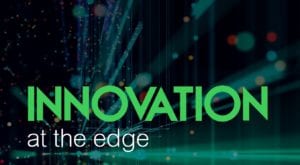Clients frequently ask me “when is the best time to upgrade my facility’s building management systems (BMS), and what’s the best way to do it?” My short answer is “when the time is right, and with the least disruption possible.” That response isn’t as simplistic as it might initially sound, so please let me explain.
Like most business decisions, choosing when and how to modernize aging building infrastructure and systems can be evaluated using return on investment, (ROI) insights. Among the performance indicators to consider on the top of the list: reducing environmental impacts, leveraging technological advancement, increasing operational efficiency, and generating healthier financial returns. Though specific payback metrics will vary depending on facility type and location, plus the age and reliability of the current installation, the outcome – transforming existing structures into smart, efficient, and flexible spaces – shouldn’t be.
Moving a building and BMS into the 21st century requires smarts, insights, and digital technology

At ATAL Engineering, a Schneider Electric Master BMS EcoXpert, we have decades of experience providing commercial, industrial, and institutional customers throughout Hong Kong with the most modern, efficient, and capable facility infrastructure possible. By melding proficiency in digital and environmental technologies, with long-established expertise in multi-disciplinary electrical and mechanical systems, our holistic and tailored approach to solving challenges has helped customers make the right next-generation Building Management System retrofit/upgrade decisions. While helping building owners and operators decide when to invest in upgrades, we work with them to quantify several factors.
6 factors impacting ROI for building management system modernization
- Improvements to occupant satisfaction and productivity
Increasing occupant well-being by ensuring ideal temperature is crucial to boosting important metrics like employee productivity, tenant retention, and increased revenue. Smart buildings, those providing the highest levels of connectivity and occupant experience, have been shown to yield better returns, commanding anywhere from 8% – 35% higher rental values and occupancy rates between 9% – 18% greater, while producing up to a 17% premium for sale in the market. - Reduced operating costs
A BMS upgrade can lower energy consumption by 30% to 80% using proven and commercially available technologies according to the UN Environment Programme. Connectivity to modern analytics platforms can also trim costs by enabling operators to optimize system performance, perform condition-based maintenance to proactively reduce unplanned equipment downtime and to better plan their work instead of reacting unexpected issues. - Precision environmental control
Healthcare facilities, data centers, and semiconductor fabricators often require precise temperature and humidity control with no tolerance for system variability or downtime. Today’s cutting-edge building automation technology supported by the Internet of Things (IoT) – generated data maintains a consistent temperature, appropriate lighting, and contaminant-free ventilation more consistently than older systems. - More robust, integrated physical security
A full-featured, building management system protects occupants with a range of unified access controls, intrusion detection, and video options, thus reducing or eliminating the cost and complexity of a separate security system. Automation can maximize operations staff’s ability to handle emergencies, react to alarms, and protect a facility and its occupants from unwanted external access. Automation features streamline the collection and analysis of data, further enabling operators and facility managers to reduce costs, increase efficiency, and create a safer internal environment. - Scalable, future-ready and digital
BMS attributes whose inherent value is often underestimated are scalability and adaptability. Uncommon in legacy systems, forward-looking building management systems support open protocols that foster integration with third-party equipment. For most facilities, an open system allows greater flexibility and substantial cost saving when servicing and adapting the installation to changing building configurations. - State-of-the-art cybersecurity
Unlike older systems, the most modern, secure building management systems use the latest in digital technology and integrated solutions specifically designed to meet the requirements of building owners, real estate developers, facility managers, and building occupants. With the exponential increase in connected IoT devices installed in buildings, building software systems must be engineered to the highest cybersecurity standards.
Modernize building management systems without disruption by trusting proven expertise
If not soon, it’s highly likely that modernizing smart building infrastructure, controlled by an open, secure, and scalable BMS is part of most organizations’ operational planning. Once all the decisions are made, and that day arrives, facility professionals will need to ensure the installation and commissioning process is as seamless as possible, with minimal disruption to the businesses’ day-to-day operations. Here’s where experience matters. Look to organizations with a track record of success replacing, upgrading, and integrating entire building management systems.
In the case of ATAL Engineering, our solutions, based on EcoStruxure™ Building solutions seamlessly integrate HVAC, lighting, fire services, plumbing and drainage, CCTV, and access control into one single, easier-to-install platform. Combined with ATAL’s project management expertise, comprehensive services, and client-centric culture, our skills have helped our clients get up and running with the least disruption possible.
To learn more
Learn how ATAL Engineering powered by Schneider Electric’s EcoStruxure BMS solutions can help you modernize your projects and improve your ROI.
 |
Schneider Electric has been recognized as the world’s most sustainable corporation in 2021 by Corporate Knights Global 100 Index. |
EcoXperts are the Enablers of Buildings of the Future
The EcoXpert Partner Program is unique in its industry and made up of a best-in-class global ecosystem of expertise. Trained and certified by Schneider Electric, EcoXperts are the implementation arms of EcoStruxure and Wiser all over the world.
Buildings of the Future is about delivering solutions for the sustainable, resilient, hyper-efficient, and people-centric buildings that our customers need. For our EcoXpert partners, this unveils immense growth opportunities through the transition to end-to-end portfolio sales that will resolve our customers’ most critical needs. For our shared customers, this means that together with our EcoXpert partners, we will drive the building industry transformation and help our customers survive and thrive today – and tomorrow.
Visit EcoXpert to learn more. Discover Buildings of the Future.



